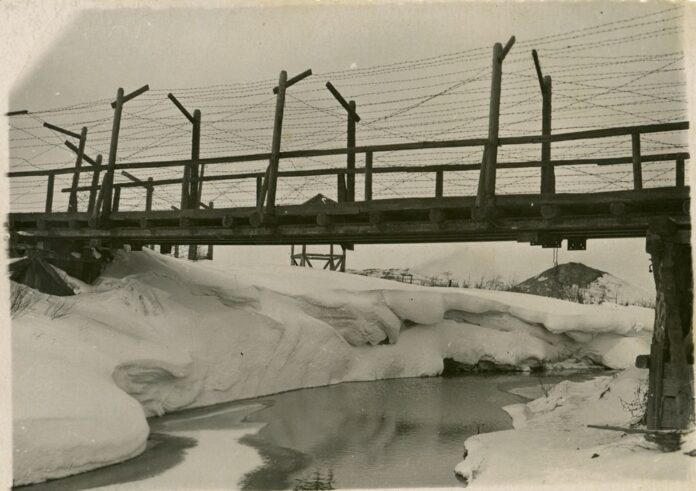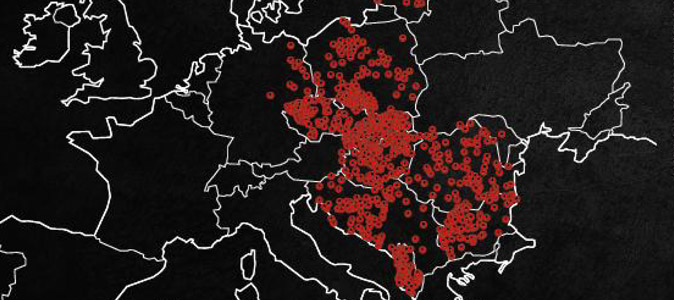
The European Gulag is an international project created by the Platform of European Memory and Conscience in cooperation with the Committee of National Remembrance in Hungary, the Estonian Institute of Historical Memory, the Lithuanian Centre for Genocide and Resistance Studies, the Institute for the Study of Communist Crimes and their Consequences in Albania, the Institute of National Remembrance in Poland, the Museum of the Occupation of Latvia, the Institute of National Remembrance in Slovakia and the Pitești Prison Museum in Romania.
In the form of an exhibition, “European Gulag” drew attention to the tragedy and suffering experienced by millions of people. “It is an attempt to uncover and recall events which have been too often marginalized in the historical narrative.”
The exhibition was presented in Budapest (Hungary), Shkodra (Albania) and Prague (the Czech Republic). It was on display in Szczecin, Poland, until September 24, 2023, after which it travelled to Pitești in Romania and Tirana in Albania. In Szczecin, leaflets in Polish were been added to the English-language exhibition, featuring selected texts.
The exhibition recalls the history of forced labour camps that were created in Central and Eastern Europe after the Second World War in countries dominated by Communist regimes: East Germany, Poland, Czechoslovakia, Hungary, Yugoslavia, Albania, Romania, Bulgaria, Lithuania, Latvia, Estonia and Moldova.
 In his famous novel entitled “The Gulag Archipelago”, Alexander Solzhenitsyn depicted a vast network of forced labour camps spread throughout the Soviet Union. A similar system of camps also existed in every country under Communist control after the Second World War. There were about 800 camps in those areas, and almost 1,500,000 people were held in them, of whom around 130,000 lost their lives. The organization of the camps was reminiscent of the Soviet gulag system as it included various categories of prisoners, both criminal and political, and also served to suppress opposition, punish political opponents and impose ideological conformity. In the early stages of these camps, numerous people were held there without a legal verdict or official decision. Imprisoning people without a fair trial was an example of the injustice and disregard for their basic rights that was common in totalitarian systems.
In his famous novel entitled “The Gulag Archipelago”, Alexander Solzhenitsyn depicted a vast network of forced labour camps spread throughout the Soviet Union. A similar system of camps also existed in every country under Communist control after the Second World War. There were about 800 camps in those areas, and almost 1,500,000 people were held in them, of whom around 130,000 lost their lives. The organization of the camps was reminiscent of the Soviet gulag system as it included various categories of prisoners, both criminal and political, and also served to suppress opposition, punish political opponents and impose ideological conformity. In the early stages of these camps, numerous people were held there without a legal verdict or official decision. Imprisoning people without a fair trial was an example of the injustice and disregard for their basic rights that was common in totalitarian systems.
At the opening of the exhibition, Platform of European Memory and Conscience Chair Dr. Marek Mutor noted that in light of Russia’ current war against Ukraine, the exhibition was important in confirming general European values and identities and also in reaching just political decisions. Crimes against humanity must not be left unpunished, because they are an existential threat to Lithuania, the other Baltic countries, Poland and all of Europe, he stressed.
The data on hand is not final, because European historians have only begun their research, the result of which is the exhibition “European Gulag” portraying the geography of this form of repression.
The exhibition was closed on November 30 at the Tuskulėnai Peace Park in Lithuania, with a discussion led by Dr. Monika Rogers. At the closing session, Dr. Dovilė Sagatienė noted that Lithuania was the one and only nation in the world that has proved that the Soviet extermination of partisan fighters constituted a genocide. She also said that in the past few years there were still about 30 cases in the courts regarding imprisonment in the Gulag, but they were closed due to the perpetrators’ age and health. The fact that Lithuania won its case against KGB officer Stanislovas Drėlingas, who participated in the arrest of the last Lithuanian partisan leader A. Ramanauskas-Vanagas, at the European Human Rights Court in 2019 is an historic victory.





























